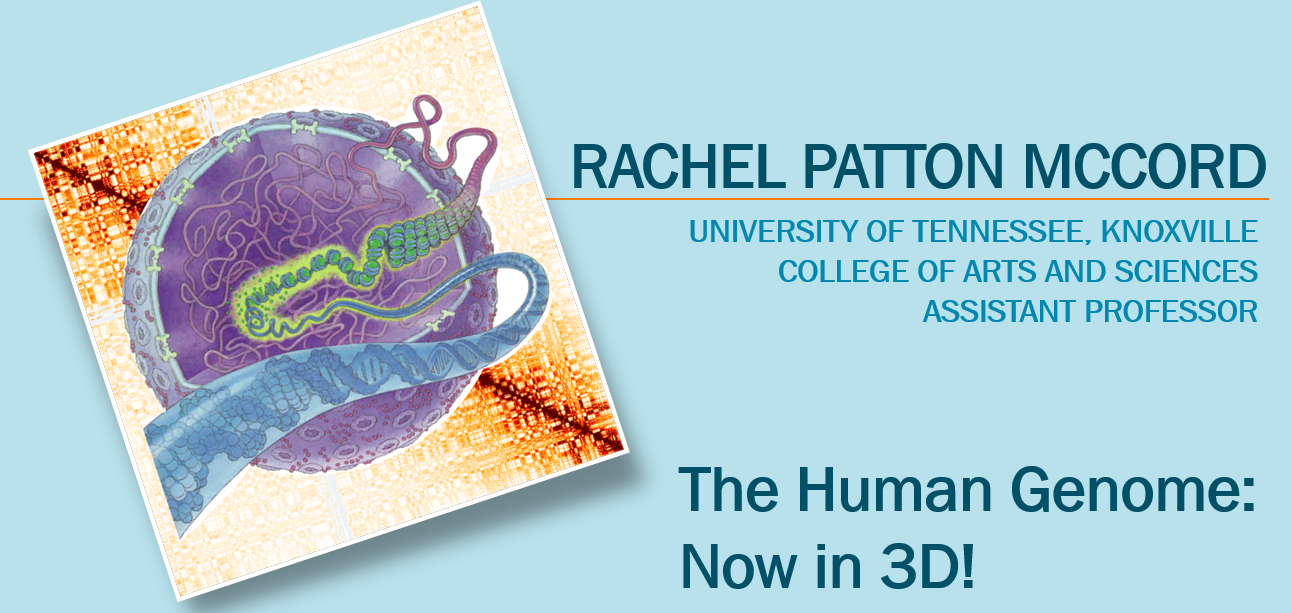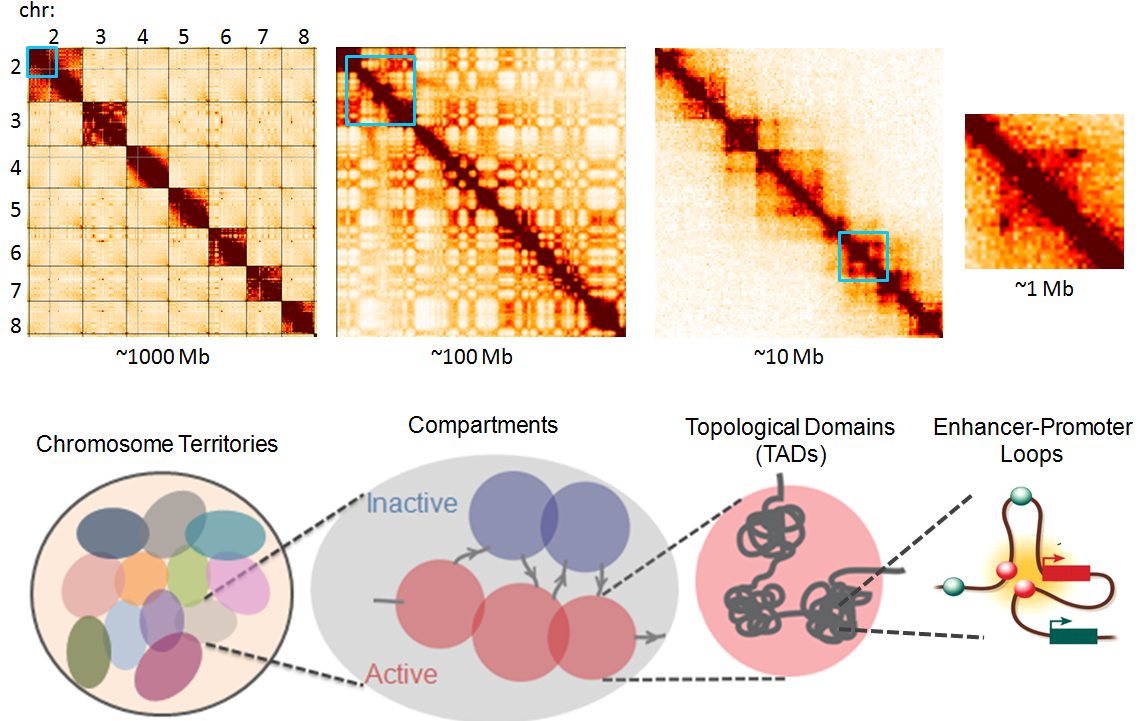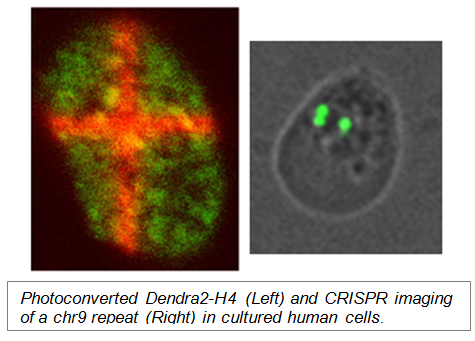Watch a 7 min MicNite talk about our research: McCord MicNite Talk

While the human genome is often considered simply a linear sequence of protein coding genes, all this genetic information is stored in 2 meter long chromosomes that must be folded and packaged into a 10 micron nucleus. To ensure normal development, homeostasis, and health, this 3D genome folding must allow accurate regulation of gene expression, repair after damage, and copying and segregation of the genome during cell division.
Recent research in has shown that the mammalian genome is packaged in a hierarchical organization, from small scale loops bringing enhancers in contact with gene promoters to large scale chromosome territories:
Disruption of 3D genome structure occurs in cancer, developmental disorders, premature aging disorders, and other diseases, but the fundamental principles and building blocks of genome structure remain uncharacterized.
Our research goals are to:
- Learn basic features and building blocks of the 3D genome structure by disrupting the structure in vitro with physical perturbations
- Investigate how the 3D genome structure responds or maintains its robustness during biologically relevant physical stress or disruption
- Find new ways to observe and measure aspects of 3D genome structure with imaging and molecular methods
- Find new statistical and modeling approaches to interpret 3D interaction data, integrating this data with other large genomic datasets
Our research tools include:
- Chromosome conformation capture (Hi-C): using high throughput sequencing to identify physical interactions between regions of the genome
- Confocal microscopy with photoconvertible fluorophores and CRISPR targeted imaging

- Genome wide profiling of chromatin states (ATAC-Seq, ChIP-Seq, RNA-Seq)
- Computational data analysis, integration and modeling